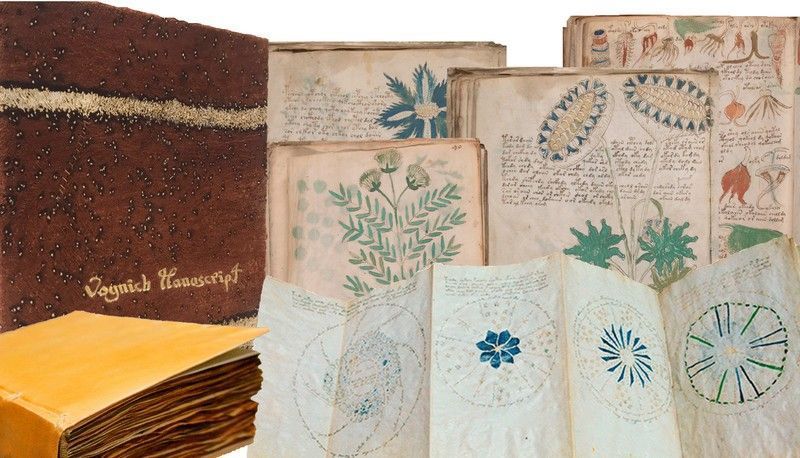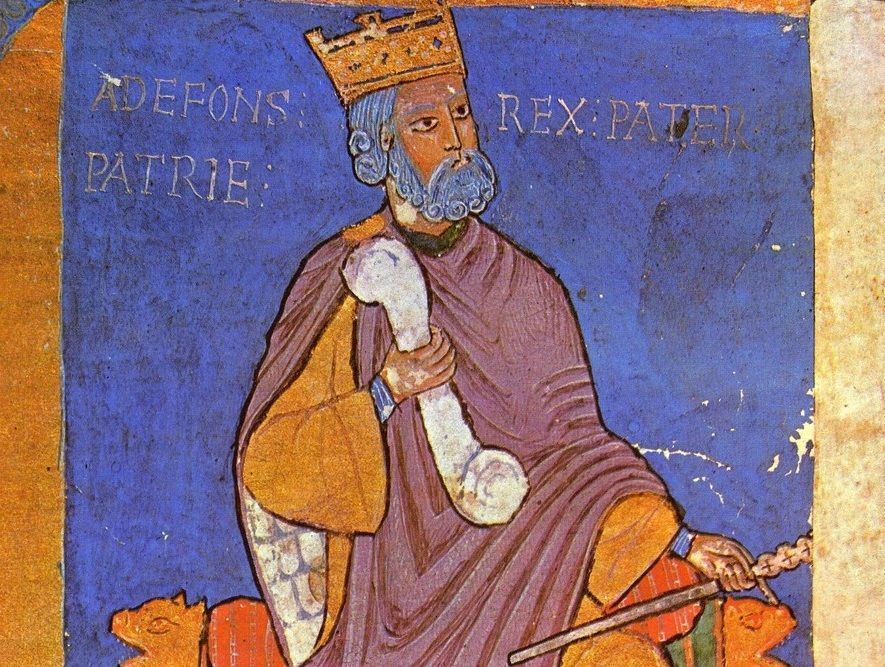General description of the manuscripts
LIBER ASTROLOGICUS
Vic Episcopal Library and Archive - Seventh century, copy 1064 - Vic Episcopal Archive and Library
The Liber Astrologicus of San Isidoro de Sevilla (ca. 556-636) is also known for the titles De natura rerum and Liber rotarum. With him, Isidore of Seville attempted to reconcile the knowledge of ancient philosophers and scholars with that of the Church Fathers in the early 7th century. He cited both Latin poets and Greek and Roman authors along with the Bible and the church fathers. Subdivided into 48 sections organized into three main chapters, in the Liber Astrologicus, Isidore deals with cosmological, astronomical and astrological topics, among others. He dedicated his manuscript to the Visigoth king Sisebute.
LIBER COMMICUS
San Millán de la Cogolla - 1073 - Real Academia de la Historia
Written in 1073 by the abbot Peter. It is a book on Mozarabic liturgy that, although maintaining the characteristics of the Emilianense manuscripts of the previous century, was created in the middle of the implementation of the Romanesque art in Spain, and when the Pope and the Cluniacense order were pressing to replace the Mozarabic liturgy by the Roman one that the Gregorian reform was imposing in all of Europe.
Liber de viris ilustribus
Bishopric of Seville - Entre 615 y 618 - Multiple copies
Following an ancient tradition, St. Isidoro offers a compendium of 46 pages of eminent characters in Spain and in the north of Africa along the 5th and 6th centuries, mainly bishops and Christian authors, with special attention to those that wrote about heresies. In his biographies of Spanish characters he offers a very interesting information about he society in his times and about the relationship between the Visigothic monarchy and the Catholic Church.
Liber Iodiciorum
Toledo - Año 654 - Multiple copies
Also called “Recceswinth’s Code”. It is the last great compilation of laws of the Visigothic monarchy. It consisted initially of five hundred laws, of which at least one hundred were written by said monarch, to which new laws were added later. It is the first Visigothic code that affects the Visigoths as well as Roman-Hispanics and was used in the Christian kingdoms until it was replaced in 1150 by the Usatges of Barcelona in Catalonia and by the Code of the Seven Partidas by Alphonse the 10th (1252-1284) in Castile.
Libro de Horas de Fernando I
León - Mediados del S. XI - Bibl. Universidad, Santiago
Named before “Diurnal of Ferdinand the First”, it is considered as one of the jewels of the Pre Romanesque miniature. Although the capital letters show a great Mozarabic influence, the rest of the images, with svelte figures of great spirituality, announce already a new art, though maintaining the spirit of the previous Spanish miniature. It preserves at present 256 pages of 315 x 225 mm, written to a single column with between 22 and 34 lines per page.
LIBRO DE HORAS DE LUIS DE LAVAL
Francia - Second part of the 15th century - National Library of France, Paris
This manuscript in Latin, a large volume of 342 folios or 684 pages. with 1234 miniatures, of which 137 are full-page, made in the workshop of Juan de Colombe with the collaboration of the best French artists of the time, is the most beautiful and richly decorated book of hours of his time and can be considered as the best exponent of the French society of the late Middle Ages and the level of quality to which the art of Miniature arrived, in a work in which the best painters of that time participate.
LIBRO DE HORAS DE MUNICH-MONTSERRAT
Escuela de Gante-Brujas - 1535-1540 - Biblioteca de la Abadía de Montserrat
This manuscript, which has been divided up because some of its leaves were torn out, consists of 221 magnificently illuminated folios, full-page or with beautiful floral decoration in the margins, with the capitular letters in gold, which include a calendar considered to be one of the most important in existence in a book of hours. His broad landscapes are particularly noteworthy, with an emphasis on distant distances, depicting not only terrestrial and typographical aspects, but also atmospheric, temporal and lighting conditions.
LIBRO DE KELLS
San Columba de Iona, Escocia - 800 - Trinity College Library (Dublin)
Considered one of the most important early medieval European manuscripts due to its size, the high quality of its images and its influence on later European miniatures, the Book of Kells is an Irish Gospel Book produced by the monks of Saint Columba on the island of Iona in Scotland, a monastic community that was very important because Saint Columba, the evangelizer of Scotland, had used it as his center of activity and it was destroyed by the Vikings in the year 793.
LIBRO DE LOS TESTAMENTOS
Oviedo Cathedral - 1109/1112 - Oviedo Cathedral
It is a cartulary that includes the official documents of the Cathedral of Oviedo between the reigns of Alphonse the Second and Doña Urraca. Commissioned by the abbot Pelayo, it is considered as one of the most interesting manuscripts of the 12th century. It pays a great deal of importance to the images, something less often in that kind of codex. These are of great quality and present an avant garde style along the line of the Blessed and the Diurnal of Ferdinand the First, with a complete differentiation of the characters, in which the intention has been to reflect more the role they represent than their royal figure.
MANUSCRITO VOYNICH
Unknown - 1404-1438 - Yale University Library
PENTATEUCO ASHBURNHAM
Scriptorium de Sevilla? - Siglo VII - National Library, Paris
Also known as the Bible of Tours because it was substracted from the library of its cathedral. There is a controversy about the origin of this manuscript, that has been considered as Visigothic from the 7th century, as a commission from Galla Placidia to the Imperial desk of Rome and even puts forward its probable origin in the north of Africa. It is the most ancient illuminated manuscript known in the west of Europe an it is considered as a precedent of the Blessed.
SPECULUM HUMANAE SALVATIONIS
Ibsbruck - 1432 - Biblioteca Nacional de España
En la Edad Media la gran mayorría de la población, incluyendo algunos nobles, no sabían leer, por lo que los códices religiosos se acompañaban con imágenes que explicaban los textos adjuntos sobre la doctrina cristiana.
El “Speculum” es una guía moral en la que cada artículo del nuevo Testamento se acompaña con tres acontecimientos del Antiguo que el autor considera relacionados con él, incluyendo para cada uno de estos una imagen que lo explica. Escrito a principios del siglo XIV, fue copiado multitud de veces, tanto en forma de manuscrito como en ediciones impresas. Aquí analizamos la que se considera de mayor lujo y calidad de entre las más de 300 copias en manuscrito que se han conservado.
TUMBO ‘A’ DE SANTIAGO
Santiago de Compostela - Entre 1129 y 1255 - Cathedral of Santiago de Compostela
Also called “Book of Privileges”, it forms together with the Chronicle of Turkey and the Calixtino Codex a set of manuscripts of similar style originated in the “scriptorium” of Santiago de Compostela in the first half of the 12th century. Its miniatures have illuminated design with special attention to relief. They are already completely Romanesque but with many Hispanic reminiscences. Its first phase includes 24 king portrayals and othe royal characters. Towards 1180 the equestrian figures of Ferdinand the Second and Alphonse the Ninth were added in a very different style.
VITAE PATRUM
San Valerio del Bierzo - 902 - Biblioteca Nacional, Madrid
It is the oldest codex of which the completion date is known. This is a copy of a compendium of biographies of saints, collected in the seventh century by Saint Valerius del Bierzo in some monastery in the Valley of Silence, made by several copyists and completed in the year 902, during the reign of Alfonso III, By Armentary for the abbot Trasmundo who considered that the model to be followed by his monks was the life of the holy oriental fathers. It contains 263 folios of parchment with two columns decorated with beautiful uncials.
- « Previous
- 1
- 2
- 3
- 4















